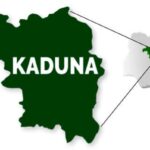Nene Audu’s major preoccupation anytime she wakes up in the morning is how to satisfy the water needs of her huge family. It is a headache that is gradually taking its drastic toll on the health of the mother of eight. The housewife wakes her two youngest daughters as early as 5.00am to begin the arduous search for water that would ease the consumption needs of the family.
Since both girls still have to go to school, their search would have to be rounded off before 7.00am so that they can get ready for school.
The current humid season has done more to worsen the plight of the family as the tiny well which lies in their court yard has since dried up, and with it also the hopes of getting a little quantity of the precious liquid has equally evaporated. So, the daily search for water is not only back breaking, but has become a chore none of them looks forward too. But they know that water is a commodity they cannot do without.
On some days when water cannot be quickly fetched at any of the numerous decrepit boreholes located in the Jikwoyi axis of the Federal Capital Territory, the helpless mother has to rely on the services of the water vendors, popularly referred to as Mai Ruwa in the city. These water vendors have now become kings of the arena, as far as water issues are concerned, says Nene. “On a daily basis we consume nothing less than 400 to 500 liters of water in my family. That has to take care of our bathing, washing, cleaning, cooking and drinking needs. It is not enough, but we have to make do with that quantity. Getting the water is not easy.
Most of the time, we simply rely on these water vendors to supply us. A gallon of water which is 25 liters used to be sold at the rate of N10 at the borehole. Recently, it was jerked up to N15. Due to the fact that the borehole is very far to my home and my little girls have to go to school, I simply call on these water vendors to supply me water. Initially, they were content to collect N20 for each keg, but now they insist on collecting nothing less than N30. Most of the time, you even have to beg them before they bring the water.
At that rate you can imagine us spending nothing less than N500 to get our water needs met. And that is the minimum amount we spend on daily basis. The quality of the water is very suspect but what can we do?” the helpless mum opines.
In Abuja, the Federal Capital, water has become a though the FCT administration has spent over N43 billion on water in the last six years. The lack is particularly more worrisome in the suburban parts of the city. That has ultimately led to the reign of a new class of ‘economic power brokers’ known as the Mai Ruwa (water vendor) who have cashed in on the booming market to make quick stipends for themselves.
They ply their trade virtually in every part of the FCT, the core city parts inclusive. In the high brow area 11 part of the Garki metropolis they can be seen in their noticeable hordes with their characteristic wheelbarrows and yellow toned kegs in tow speeding through the area in search of patronage.
Ironically even in such a prestigious area of the city they make easy proceeds as the water scarcity has equally hit the vicinity. A resident of the area, Mrs Irantioluwa Ebun says that getting water on a daily basis has become a herculean task as they have to rely more and more on the services of the young men who have taken up the menial jobs of water vendors. “These boys really do have to be commended. What would we have done without their help? They service the entire estate in which I live.
As early as 5 am in the morning they move from apartment to apartment, selling water to whoever is in need of it. Most of the time they get the water from the taps in the estate, but it is not every time the taps do run. In most cases they have to source for the water elsewhere. To me the amount they charge is nothing compared to the stress they have to undergo in getting the water in the first place and then in moving it to the different apartments in the area. Even when people complain that the water vendors charge exorbitantly I disagree.
We all know that there is a perennial water shortage here in the city and for a few young boys to fill in the gaps of providing water for the residents I think they should be commended while the authorities are urged to provide potable water to service the needs of the citizenry.”
The paramount ruler of Girishi community, located a few meters from the Maitama District, Malam Jonah M. Baba lamented that his people might being to die from water related ailments, if the government does not come quickly to their aide. His people, from all indications are facing a huge crisis, based on acute water lack. For now, residents have to rely on muddy streams and broken pipes to quench their thirst on a daily basis. The fact that they are located a stone throw from a glittering landscape, such as Maitama has not brought any succour. “We need water urgently. It is a crisis that is threatening to engulf us. If the authorities do not quickly come to our assistance, there would be a huge crisis on our hands. All we need for now is water. Please, help, us beg them to come and help us,’ he pleaded in a cracked voice.
Few weeks back, the city’s water board director, Engr. Jibrin Ibrahim informed a stunned city that the administration would commence the rationing of water because of the ‘coming of the peak period of the dry season. Going by the statement issued by the board, rationing of water supply would start in some selected highbrow neighborhoods and few suburban enclaves of Abuja because of what authorities say is the “peak period of the dry season” and lack of adequate treatment plants to carry out periodic sanitization of water.
The rationing has started taking its toll on residents of the most areas of the city that had hitherto enjoyed water supply from government source. Affected areas, according to the statement, are Asokoro, Maitama and Garki as well as satellite towns of Nyanya, Karu, Gwagwalada and Bwari.
Also based on the announcement, the areas to be affected would have no water for their needs for four days in a week, while on the three remaining days they would have water for only for specified number of hours. Also according to a source at the board Asokoro residents would have water supply for a 24 hour period after which residents of Maitama would enjoy supply for about eight hours only.
Water would run for seven hours in Karu, 13 hours in Gwagwalada; and for two hours only in Bwari old town.
“Please note that rationing of water supply is only a temporary measure. Full services will be available for all districts with the completion of Phases 3 and 4 treatment plants,” the FCT Water Board notice probably after an afterthought enjoined. It did not say specifically when the water projects would be completed.
How temporary the instability would last is one question begging for answers on the lips of most residents. FCT authorities say that although raw water was available at the Lower Usuma Dam, funds were yet to be released for completion of Phase 3 and 4 water treatment plant at the dam, which would have complemented the exiting treatment plans. It would also be recalled that the FCT minister Bala Mohammed had a few weeks back informed the House of Representatives Committee on FCT that high cost of imported metal pipes was hampering the completion of the water treatment plants.
Tinu Ayanniyi of the Environmental New service has uncomplimentary words to say about the water crisis bedeviling the country: “water demand is increasing three times as fast as the world’s population growth rate, and poverty is the single most important factor related to meeting that demand, say officials at the 3rd World Water Forum. Some 1.2 billion people lack safe water supply and 2.4 billion live without secure sanitation, according to Water Forum official figures.
At least, five million people die yearly from water related diseases, including 2.2 million children under the age of five. An estimated one half of people in developing countries are suffering from diseases caused either directly by infection through the consumption of contaminated water or food, or indirectly by disease carrying organisms, such as mosquitoes, that breed in water…As far back as 2000, the United Nations had been warning of future crisis world over.
While the developed nations are finding solution to the water crisis, the developing nations appears to be folding their arms not knowing what to do. The implications are more deaths, more suffering for the people. In Nigeria, more than half the population has no access to clean water, and many women and children walk for hours a day to fetch it and the country is one of the world water flashpoints.
The water sector budgetary allocation by the Federal Government between 1999 and 2007 is over N357.86 billion to provide safe drinking water, yet there appears to be no solution in sight. The billions appear to have dried up in the pipes instead of water flowing there. The over two million people have been left to continue drinking water containing all sorts of bacteria, germs capable of causing diseases.
State governments in Nigeria have spent millions purchasing treatment chemicals for water that is not available. There are now indiscriminate sinking of boreholes without proper geophysical survey. Some of which are close to septic tanks, unlined pit latrine and waste dump sites.
From Shonga in Kwara State to Onipe in Oyo State, Ogbia in Bayelsa and Yankari in Bauchi, Kaura in Jigawa there is continued prevalence of poor quality water in the country. The masses continue to fetch water from questionable sources such as rivers, ponds, burst pipes and wells. How can this be in a land that has fresh water in abundance by way of rivers all over?”
A global crisis
It would interest many to know that the water scarcity hitting urban cities such as Abuja is not a unique one. It affects a number of metropolitan cities across the world. For instance info.k4health.org, a global research outfit paints a dismal picture about the looming water shortage about to hit the world. It attributes the problem to expanding human growth.
In a recent report it says inter alia that “as populations grow and water use per person rises, demand for freshwater is soaring. Yet the supply of freshwater is finite and threatened by pollution.
To avoid a crisis, many countries must conserve water, pollute less, manage supply and demand, and slow population growth. Caught between growing demand for fresh water on one hand and limited and increasingly polluted water supplies on the other, many developing countries face difficult choices.
Populations continue to grow rapidly. Yet there is no more water on earth now than there was 2,000 years ago, when the population was less than 3% of its current size. Rising demands for water for irrigated agriculture, domestic (municipal) consumption, and industry are forcing stiff competition over the allocation of scarce water resources among both areas and types of use.”
It adds equally that, “today 31 countries, accounting for under 8% of the world population, face chronic freshwater shortages. By the year 2025, however, 48 countries are expected to face shortages, affecting more than 2.8 billion people—35% of the world’s projected population. Among countries likely to run short of water in the next 25 years are Ethiopia, India, Kenya, Nigeria, and Peru.
Parts of other large countries, such as China, already face chronic water problems. In much of the world polluted water, improper waste disposal, and poor water management cause serious public health problems. Such water-related diseases as malaria, cholera, typhoid, and schistosomiasis harm or kill millions of people every year. Overuse and pollution of water supplies also are taking a heavy toll on the natural environment and pose increasing risks for many species of life.
What Can Be Done?
Rapid urbanization was identified as the reason for increased usage of water. “The level of water use also reflects the level of urbanization in a country. Low household water use in many developing countries today often reflects difficulty in obtaining freshwater. Piped water systems are rare in rural areas. Two-thirds of the world’s population, the majority in developing countries, get their water from public standpipes, community wells, rivers and lakes, or rainfall collected off roofs. Often rural people—usually women and girls must walk many kilometers and spend many hours fetching water for their households. In Africa, for instance, women and girls spend 40 billion person-hours yearly hauling water.
Urbanization increases water use dramatically. For example, in 1900 the average American household used as little as 10 cubic meters of water per year compared with more than 200 cubic meters today. Why? A century ago, most Americans obtained their freshwater from wells or public standpipes.
Running water was largely unavailable to households except in big cities, and most people lived in the rural areas. In contrast, virtually every American household today has running water available, and this water costs its users very little. As the world becomes predominately urban, while agriculture depends more and more on irrigation, it will be difficult for cities to meet the rising demand for freshwater. In developing countries rapid urban growth often puts tremendous pressure on antiquated, inadequate water supply systems.
For instance, between 1950 and 1980, the populations of many cities in Latin America, such as Bogota, Mexico City, São Paulo, and Managua, tripled or even quadrupled. Such African cities as Nairobi, Dar es Salaam, Lagos, and Kinshasa grew sevenfold, primarily because of a rural exodus. In the 1990s cities of developing countries have had to cope with about 60 million new arrivals every year. Yet many agencies are not equipped to manage the urban water supply, while some countries have ineffective water allocation systems that allow cities to run short of water at the same time that water resources are being used for subsidized agriculture.
It however offers some solutions to countries facing perennial water shortages or those on the verge of the crisis. “It may already be too late for some water-short countries with rapid population growth to avoid a crisis. Many other countries can avoid the coming crisis if appropriate policies and strategies are formulated and acted on soon. Whether water is used for agriculture, industry, or municipalities, there is much room for conservation and better management. Effective strategies must consider not only managing the water supply better but also managing demand better. To avoid catastrophe over the long term, it also is important to act now to slow the growth in demand for freshwater by slowing population growth.
Currently, in many developing countries millions of people want to plan their families and to use contraception. Family planning programs have played an important role in assuring individual reproductive health and in reducing national fertility levels. Continuing and expanding these programs also can help assure that population growth eventually slows to sustainable levels in relation to the supply of freshwater.”
 Join Daily Trust WhatsApp Community For Quick Access To News and Happenings Around You.
Join Daily Trust WhatsApp Community For Quick Access To News and Happenings Around You.


